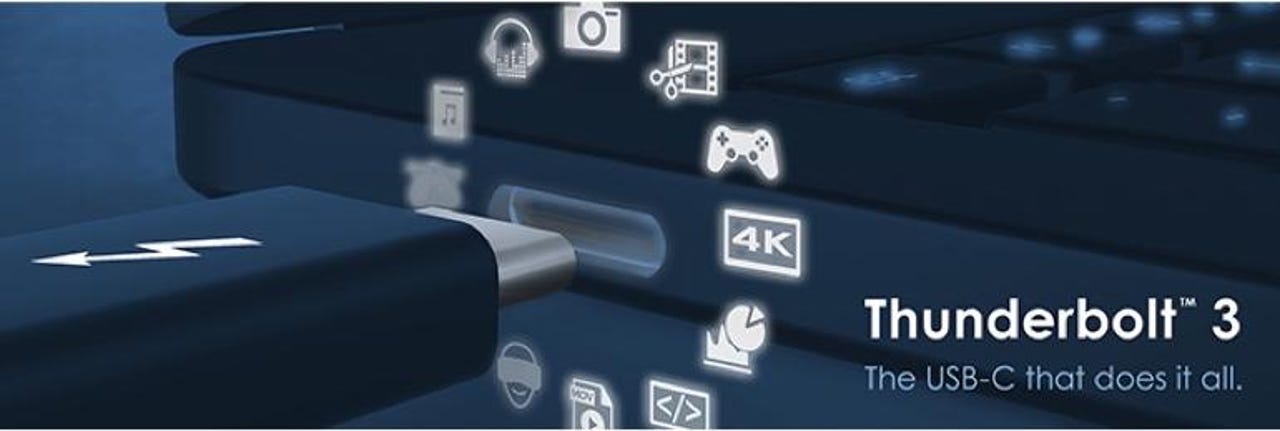USB4 will come with Thunderbolt 3 support – and speeds


Thunderbolt 3
Intel has set in motion a plan to make its Thunderbolt 3 protocol more widely available by offering it to the USB Promoter Group, a move that will allow other chip makers to make use of the protocol on a royalty-free basis.
Must read: 10 Apple products you shouldn't buy (March 2019 edition)
Featured
While it's early days for the USB4 specification – the USB Promoter Group is expected to unveil details later this year – we're now looking at the new protocol bringing 40Gbps speeds and the simplicity of USB-C to the masses.
The current USB 3.2 standard tops out at 20Gbps.
Combining the USB standard and Thunderbolt 3 into a single standard will also lessen the confusion over the two, by standardizing ports, cabling, and protocols.
"Releasing the Thunderbolt 3 protocol specification is a significant milestone for making today's simplest and most versatile port available to everyone," said Jason Ziller, general manager, Client Connectivity Division at Intel. "This, in combination with the integration of Thunderbolt 3 into upcoming Intel processors is a win-win for the industry and consumers."
While Thunderbolt 3 offers a range of benefits, and is in use in a broad range of hardware – from docks and displays, to storage and external GPUs – it's interesting to note there are currently only a little over 450 certified devices in the market.
USB4 will undoubtedly change all that, with manufacturers being able to bring high-performance and the convenience of a single connector standard to devices across all price points, without owing Intel any royalties.
However, it is interesting that Intel has said that it will continue to market the Thunderbolt brand, which may result in some level of consumer confusion when the two being offered are side-by-side. This may suggest that Intel may be working on a Thunderbolt 4 protocol that may not be compatible with USB4.
That said, expect the transition to USB4 becoming a standard to take time, especially given the timescales that we are looking at for PC – and for that matter, smartphone and tablet – upgrades.
USB 2.0 ports and devices are going to be around for a long time.
Has your iPhone or iPad stopped charging? Check this first!
See also:
- Western Digital debuts world's fastest 1TB Sandisk Extreme microSD card
- Galaxy Fold: A $2,000 smartphone becomes a reality, but is it worth the money?
- iPhone battery draining fast after installing iOS 12.1.4? Here how to diagnose the problem and get more battery life
- Some GPS receivers may malfunction on or after April 6
- Should you be scared of your laptop's webcam?
- This iOS 12 trick allows you to passcode-protect apps
- Apple's biggest embarrassment of 2018
- Weird but really useful gadgets